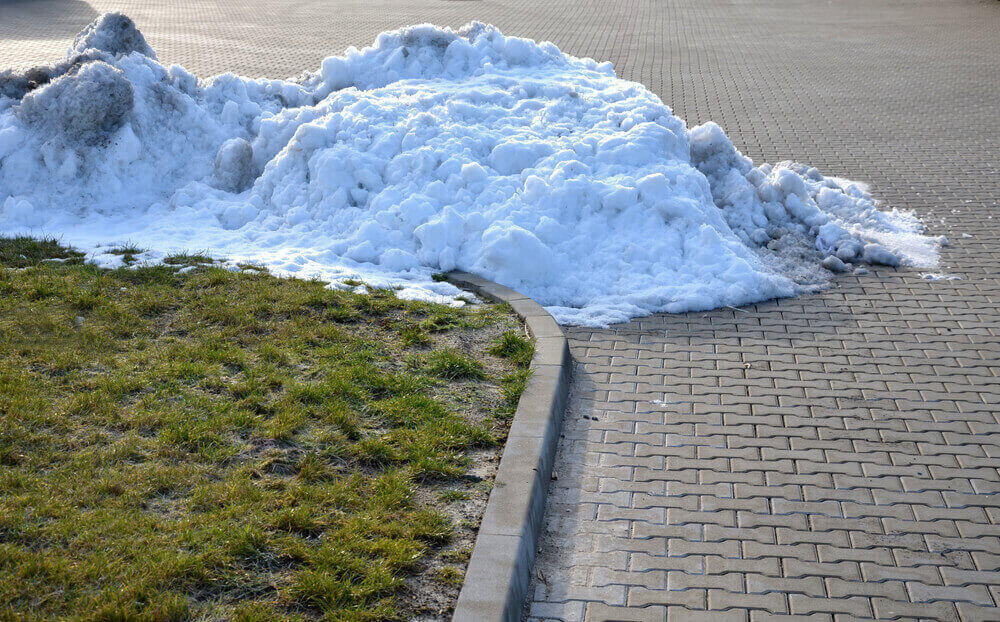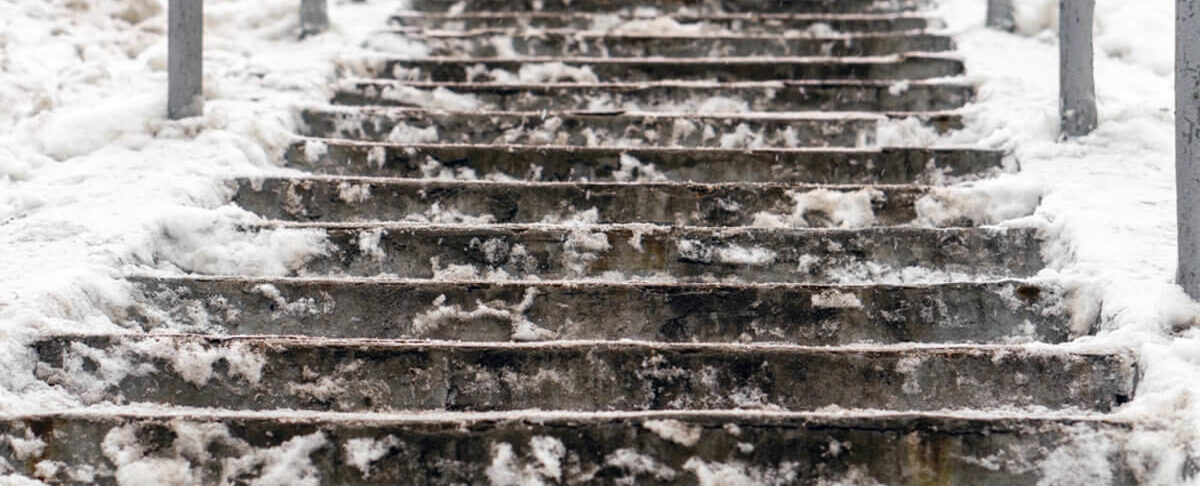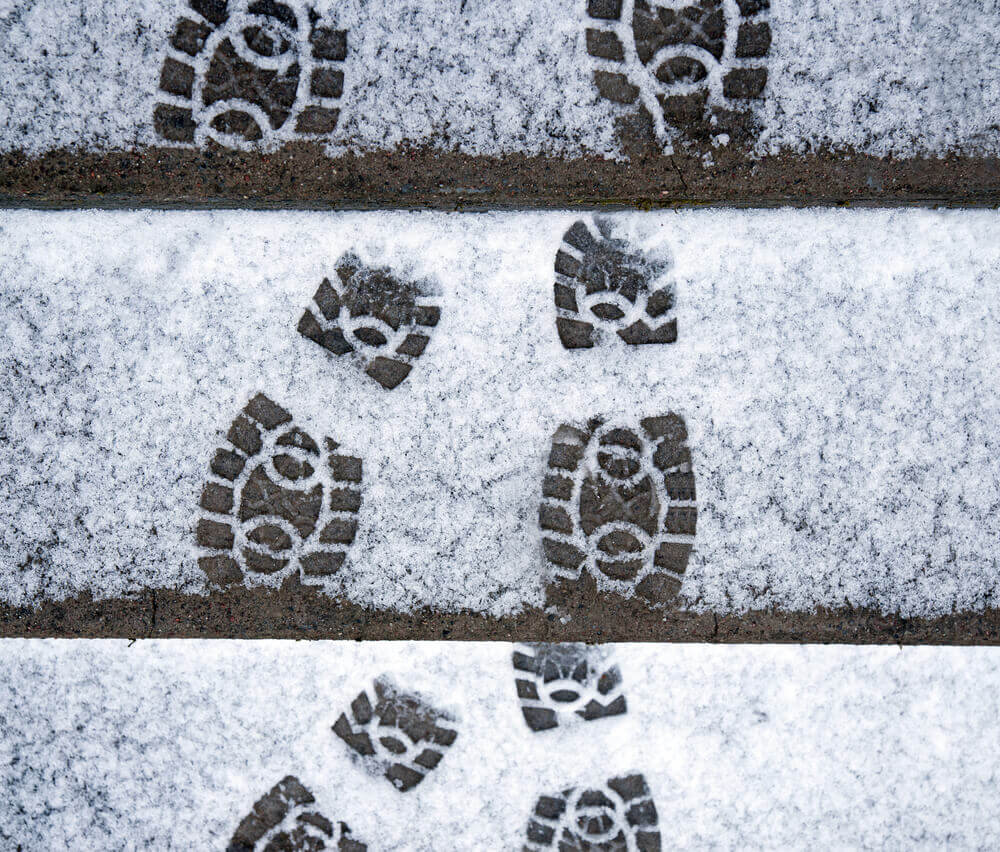Winter can be a challenging season for homeowners, especially when it comes to maintaining concrete steps. Ice and snow can create hazardous conditions, increasing the risk of slips and falls. To prevent accidents and ensure the safety of family members and visitors, it’s essential to take proactive steps to keep concrete steps clear and ice-free.
Navigating this frosty period requires a comprehensive winter safety approach, especially for outdoor surfaces like concrete steps. This guide reveals expert-recommended best practices for keeping concrete steps safe and ice-free in the winter.
Understanding the Nature of Ice and Concrete Steps
Concrete steps are a popular choice for homeowners because they are durable and require little maintenance. However, during the winter months, they can become dangerous when covered in ice. To keep concrete steps safe and ice-free, it is important to understand the nature of ice and concrete. Ice is formed when water freezes and turns into a solid. When water freezes, it expands, which can cause damage to concrete surfaces. This is because concrete is porous and can absorb water, which can then freeze and cause cracks in the surface.
To prevent ice from forming on concrete steps, it is important to keep them clean and dry. This means removing any snow or ice as soon as possible and using salt or other de-icing agents to prevent ice from forming. It is also important to avoid using metal shovels or other sharp tools on concrete surfaces, as they can cause damage and lead to cracks. Instead, use a plastic shovel or broom to remove snow and ice.
Preparation Before Winter for Keeping Concrete Steps Safe
While there are several advantages of concrete steps, it is essential to prepare the concrete steps to ensure they remain safe and ice-free. Here are some best practices to follow:
Inspect the Steps
Inspecting the steps before winter is crucial to identify any damages or cracks that could worsen during the cold season. Any minor damages should be repaired immediately to prevent them from expanding and becoming hazardous.
Clean the Steps
Cleaning the steps is another critical step in preparing for winter. Any debris, leaves, or dirt should be removed to prevent them from getting wet and causing slippery conditions.
Apply a Sealant
Applying a sealant to the concrete steps can help prevent water from penetrating the surface and causing damage. A sealant can also help prevent ice from forming on the steps, making them safer to walk on.
Install Handrails
Installing handrails on both sides of the steps can provide additional support and stability, especially during icy conditions. Handrails can also help prevent slips and falls, reducing the risk of injury.
Use Anti-Slip Products
Using anti-slip products, such as mats or coatings, can provide additional traction and prevent slips and falls. These products should be applied before the winter season starts and regularly maintained throughout the season.
Proper Drainage
Proper drainage is essential to prevent water from pooling on concrete steps and freezing, which could lead to slips and falls. Ensure that the steps have adequate drainage, and clear any debris or snow that could block the drainage.
Lighting
Proper lighting is crucial for safety, especially during winter when daylight hours are shorter. Ensure that the area around the concrete steps is well-lit to improve visibility and reduce the risk of accidents.
Install Heated Mats
Heated mats are an environmentally friendly alternative to deicers. They use electricity to melt snow and ice and can be installed directly on concrete steps. While they can be more expensive than traditional deicers, they are reusable and can last for several winters.
Best Materials for Keeping Concrete Steps Safe and Ice-Free
When it comes to preventing ice on concrete steps, choosing the right material is crucial. Here are some of the best materials for ice prevention:
Calcium Chloride
Calcium chloride is a popular option for preventing ice on concrete steps. It is effective at melting ice at temperatures as low as -25°F and is less damaging to concrete than other de-icing salts. However, it is important to note that calcium chloride can be corrosive to metal and can damage vegetation, so it should be used with caution.
Rock Salt
Rock salt, also known as sodium chloride, is a common and inexpensive option for preventing ice on concrete steps. It is effective at melting ice at temperatures down to around 20°F, but it can be damaging to concrete over time. It is also not as effective as calcium chloride at lower temperatures.
Sand
While sand does not melt ice, it can provide traction on slippery surfaces. It is a good option for preventing falls on concrete steps, but it should be used in conjunction with another de-icing material for maximum effectiveness.
Overall, calcium chloride is the most effective material for preventing ice on concrete steps, but it should be used with caution due to its potential for damage. Rock salt is a cheaper alternative but can be damaging to concrete over time. Sand is not a de-icing material but can provide traction on slippery surfaces.
Keeping Concrete Steps Safe and Ice-Free in Winter

Overall, the key to keeping concrete steps safe and ice-free in winter is to be proactive and prepared. By taking steps to prevent ice buildup and having a plan in place for addressing any issues that do arise, property owners can help ensure the safety of their loved ones, guests and visitors. Want to make the switch from wood steps to concrete steps? Contact Richfield Blacktop today for a free consultation.





